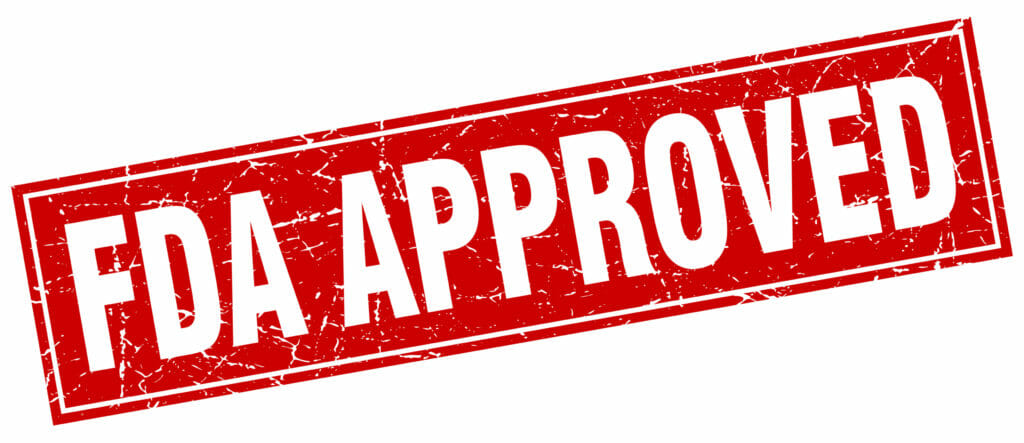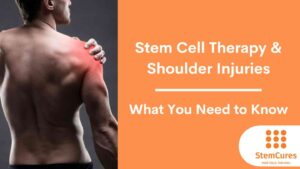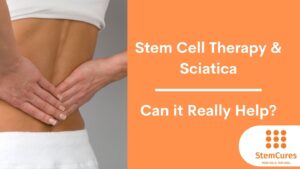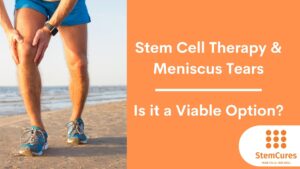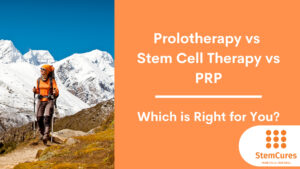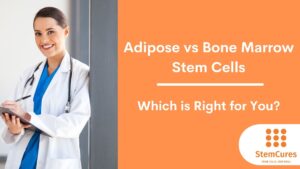Simplified FDA Stem Cell Guidelines for Lower Back Pain and Joint Pain Treatment.
FDA released guidelines new guidelines for using Stem Cells for back pain and joint pain. Their mission is to ensure that these procedures are not only relieving pain but are also safe. In the last few years, there has been a proliferation of “sham” stem cell clinics performing unproven and dangerous Stem Cell procedures on vulnerable and desperate patients and charging exorbitant rates. Aggressive advertising is used by them to lure patients. This is an attempt rightfully so by FDA to curb their activities. I have shown the FDA excerpts in small letters and layman’s interpretation in caps.
1. BONE MARROW STEM CELLS ARE ALLOWED.
BONE MARROW CONCENTRATE IS NOT CONSIDERED HCT/P AND FDA RULES DON’T APPLY IF THE FOLLOWING CONDITIONS ARE MET.
“Minimally manipulated bone marrow for homologous use and not combined with another article (except for water, crystalloids, or a sterilizing, preserving, or storage agent, if the addition of the agent does not raise new clinical safety concerns with respect to the bone marrow);” [MH 2]
2. CORD BLOOD STEM CELLS ARE SUBJECT TO FDA GUIDELINES AND ARE NOT APPROVED AS THEY POSSESS METABOLIC ACTIVITY. HOWEVER, THEY CAN BE USED IF THEY ARE YOUR OWN OR THEY BELONG TO FIRST OR SECOND DEGREE BLOOD RELATIVE.
Examples of HCT/Ps include, but are not limited to, bone, ligament, skin, dura mater, heart valve, cornea, hematopoietic stem/progenitor cells derived from peripheral and cord blood, manipulated autologous chondrocytes, epithelial cells on a synthetic matrix, and semen or other reproductive tissue. [MH 2]
i) The HCT/P does not have a systemic effect and is not dependent upon the metabolic activity of living cells for its primary function; or ii) The HCT/P has a systemic effect or is dependent upon the metabolic activity of living cells for its primary function, and: a) Is for autologous use; b) Is for allogeneic use in a first-degree or second-degree blood relative; or c) Is for reproductive use.[MH 3]
3. PLATELET RICH PLASMA [PRP] IS APPROVED.
For example, platelet rich plasma (PRP, blood taken from an individual and given back to the same individual as platelet rich plasma) is not an HCT/P under Part 1271 because it is a blood product. Accordingly, FDA does not apply the criteria in 21 CFR 1271.10(a) to PRP, and PRP is outside the scope of this guidance. [MH 21]
4. INTACT [NOT GROUND/DEHYDRATED] AMNIOTIC MEMBRANE IS APPROVED ONLY IF USED IN THE CORNEA OF THE EYE. IT IS NOT APPROVED IF USED FOR WOUND CARE OR FOR BONE REGENERATION.
- A manufacturer processes amniotic membrane to preserve it and package it in sheets. The HCT/P generally is considered minimally manipulated because the processing does not alter the original relevant characteristics of the HCT/P relating to its utility to serve as a barrier.[MH 10]
- A manufacturer grinds and lyophilized amniotic membrane and packages it as particles. The HCT/P generally is considered more than minimally manipulated because the processing alters the original relevant characteristics of the HCT/P relating to its utility to serve as a barrier. [MH 10]
- Amniotic membrane is used for bone tissue replacement to support bone regeneration following surgery to repair or replace bone defects. This is not a homologous use because bone regeneration is not a basic function of amniotic membrane.[MH 18]
- An amniotic membrane product is used for wound healing and/or to reduce scarring and inflammation. This is not homologous use because wound healing and reduction of scarring and inflammation24 are not basic functions of amniotic membrane.[MH 18]
- An amniotic membrane product is applied to the surface of the eye to cover or offer protection from the surrounding environment in ocular repair and reconstruction procedures. This is homologous use because serving as a covering and offering protection from the surrounding environment are basic functions of amniotic membrane.25 [MH 18]
5. AMNIOTIC FLUID WITH STEM CELLS NOT APPROVED AS THEY POSSESS METABOLIC ACTIVITY. AMNIOTIC FLUID WITHOUT ANY CELLS CAN POSSIBLY BE INJECTED INTO SYNOVIAL JOINTS. HOWEVER BECAUSE THEY DONT MEET THE CRITERIA OF “HOMOLOGOUS” USE, THEY CANNOT BE USED IN DISCS, LIGAMENTS, TENDONS, BONES AND MUSCLES.
6. FAT [ADIPOSE] STEM CELLS ARE NOT APPROVED FOR BACK PAIN OR JOINT PAIN TREATMENT. IT IS ALSO NOT APPROVED FOR TREATING NEUROLOGICAL CONDITIONS.
Example 14-1: Original relevant characteristics of adipose tissue relating to its utility to provide cushioning and support generally include its bulk and lipid storage capacity. A manufacturer recovers adipose tissue by tumescent liposuction and processes (e.g., enzymatically digests, mechanically disrupts, etc.) the adipose tissue to isolate cellular components (with or without subsequent cell culture or expansion), commonly referred to as stromal vascular fraction, which is considered a potential source of adipose-derived stromal/stem cells. The definition of minimal manipulation for structural tissue applies. In this example, the HCT/P generally is considered more than minimally manipulated because the processing breaks down and eliminates the adipocytes and the surrounding structural components that provide cushioning and support, thereby altering the original relevant characteristics of the HCT/P relating to its utility for reconstruction, repair, or replacement. [MH 13]
- Adipose tissue is used to fill voids in the face or hands (e.g., for cosmetic reasons). This is homologous use because providing cushioning and support, is a basic function of adipose tissue.26 b. An HCT/P from adipose tissue is used to treat musculoskeletal conditions such as arthritis or tendonitis by regenerating or promoting the regeneration of articular cartilage or tendon. This is generally not considered a homologous use because regenerating or promoting the regeneration of cartilage or tendon is not a basic function of adipose tissue. c. An HCT/P from adipose tissue is used to treat neurological disorders such as multiple sclerosis by limiting the autoimmune reaction and promoting remyelinization. This is generally not considered a homologous use because limiting the autoimmune reaction and promoting remyelinization are not basic functions of adipose tissue. d. Adipose tissue is used for transplantation into the subcutaneous areas of breast for reconstruction or augmentation procedures. This is homologous use because providing cushioning and support is a basic function of adipose tissue.[MH 19]
7. SVF [FAT STEM CELLS] NOT ALLOWED IN THE SAME DAY SURGERY EXCEPTION
For the exception to apply, an establishment5 must: a. Remove and implant the HCT/Ps into the same individual from whom they were removed (autologous use); b. Implant the HCT/Ps within the same surgical procedure; and c. The HCT/Ps remain “such HCT/Ps;” they are in their original form. [SSS 4]
An HCT/P remains “such HCT/P” when it is in its original form. Generally, the only processing steps that will allow an HCT/P to remain “such HCT/P” are rinsing, cleansing, sizing, and shaping.[SSS 5]
In general, limited handling such as rinsing and cleansing, by centrifugation or filtration solely to remove debris (e.g., lipids, blood, bone particles) would allow the HCT/P to remain “such HCT/P.” Other processing steps, including by centrifugation or filtration, for cell isolation, cell expansion, cell activation, or enzymatic digestion generally would not allow the HCT/P to remain “such HCT/P” and the establishment would not qualify for the exception13. [SSS 7]
Example 7-1: Adipose tissue is recovered by tumescent liposuction14. The lipoaspirate is centrifuged to facilitate removal of debris and extracellular fluid. No steps are taken to isolate stem cells (also commonly referred to as stromal vascular fraction) from the lipoaspirate. The adipose tissue remains “such HCT/P” because nothing else is added to the adipose tissue, only minor handling is performed, and the adipose tissue retains its original form as a connective tissue composed of clusters of adipocytes and other cells surrounded by a reticular fiber network and interspersed small blood vessels. It is then re-implanted into the same patient from whom it was removed in order to achieve the intended effect15. We generally would consider the establishment removing and implanting this HCT/P from adipose tissue to qualify for the exception under 21 CFR 1271.15(b). [SSS 7]
Example 7-1: Adipose tissue is recovered by tumescent liposuction14. The lipoaspirate is centrifuged to facilitate removal of debris and extracellular fluid. No steps are taken to isolate stem cells (also commonly referred to as stromal vascular fraction) from the lipoaspirate. The adipose tissue remains “such HCT/P” because nothing else is added to the adipose tissue, only minor handling is performed, and the adipose tissue retains its original form as a connective tissue composed of clusters of adipocytes and other cells surrounded by a reticular fiber network and interspersed small blood vessels. It is then re-implanted into the same patient from whom it was removed in order to achieve the intended effect15. We generally would consider the establishment removing and implanting this HCT/P from adipose tissue to qualify for the exception under 21 CFR 1271.15(b). [SSS 8]
8. IF THERE IS CELL ISOLATION DURING PROCEDURE, SAME SURGICAL PROCEDURE EXCEPTION CANNOT BE APPLIED.
In general, limited handling such as rinsing and cleansing, by centrifugation or filtration solely to remove debris (e.g., lipids, blood, bone particles) would allow the HCT/P to remain “such HCT/P.” Other processing steps, including by centrifugation or filtration, for cell isolation, cell expansion, cell activation, or enzymatic digestion generally would not allow the HCT/P to remain “such HCT/P” and the establishment would not qualify for the exception13.
9. FDA WILL BE PRIORITISING THEIR SCRUTINIZING. THOSE USING AMNIOTIC/UMBILICAL/PLACENTAL PRODUCTS AND INJECTING STEM CELLS SYSTEMICALLY OR IN UNUSUAL PLACES AND THOSE TREATING SERIOUS/LIFE THREATENING CONDITIONS ARE AT THE HIGHEST RISK. STEM CELL USE IN SPINE PAIN AND JOINT PAIN SEEMS TO BE LESS RISKY FROM AN FDA OVERSIGHT.
FDA intends to focus enforcement actions on products with higher risk, taking into account factors such as whether the product is for non-autologous (allogeneic) use and the route and site of administration. For example, actions related to products with routes of administration associated with a higher risk (e.g., those administered by intravenous injection or infusion, aerosol inhalation, intraocular injection, or injection or infusion into the central nervous system) will be prioritized over those associated with a lower risk (e.g., those administered by intradermal, subcutaneous, or intra-articular injection). HCT/Ps that are intended for non-homologous use, particularly those intended to be used for the prevention or treatment of serious and/or life-threatening diseases and conditions, are also more likely to raise significant safety concerns than HCT/Ps intended for homologous use because there is less basis on which to predict the product’s behavior in the recipient, and use of these unapproved products may cause users to delay or discontinue medical treatments that have been found safe and effective through the New Drug Application or BLA approval processes.
If you are interested in reading the whole FDA document, here is the link.
https://www.fda.gov/NewsEvents/Newsroom/PressAnnouncements/UCM585345.htm

